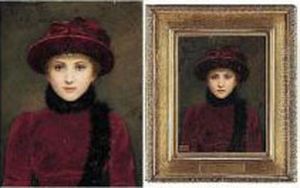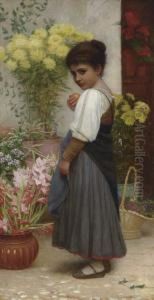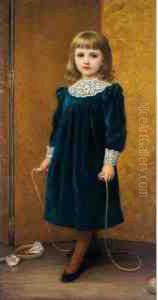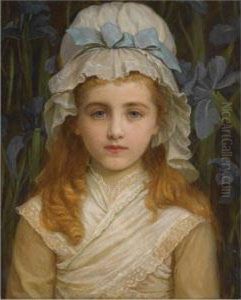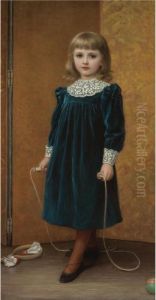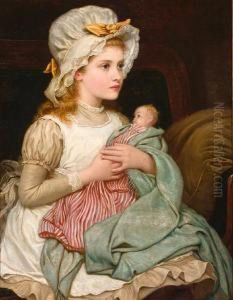Kate, Nee Dickens Perugini Paintings
Kate Perugini, born Catherine Elizabeth Macready Dickens, was an English painter of the Victorian era, whose talent was recognized and appreciated in the art circles of her time. She was born on October 29, 1839, into a milieu that significantly influenced her artistic and personal life. She was the daughter of Charles Dickens, one of the most famous novelists of the Victorian era, and his wife Catherine Dickens (née Hogarth). Growing up in a household steeped in literary and artistic creativity, Kate was exposed to the cultural elite of her day, which undoubtedly shaped her artistic aspirations and achievements.
Kate was initially taught by her aunt, Georgina Hogarth, and later received formal art education, which was quite progressive for women in her time. Her early marriage to Charles Allston Collins, a painter and the brother of Wilkie Collins, a close friend of her father, ended tragically with his death, leaving her a young widow. She later married the Italian artist Carlo Perugini, with whom she shared not only her life but also a deep involvement in the art world. This marriage furthered her exposure to and participation in the European art scene, especially in Italy where the couple spent a considerable amount of time.
Perugini's work was predominantly in the genre of portraiture, but she also explored subject paintings and occasionally landscapes. Her style was reflective of the Victorian aesthetic, which emphasized detail, emotion, and moral undercurrents. She exhibited her work at prestigious venues such as the Royal Academy and the Society of British Artists, a testament to her skills and the respect she commanded as an artist. Despite the overshadowing fame of her father and the male-dominated art world of her time, Kate Perugini carved out a space for herself and her art, ensuring her a place in the annals of Victorian art history.
Kate Perugini's life was marked by both personal tragedies and professional triumphs. Her efforts to establish herself as an independent artist, away from the towering legacy of her father, while navigating the challenges posed by the societal norms and expectations of women in the Victorian era, speak volumes of her resilience and passion for art. She continued to paint and be involved in the art community until her later years, leaving behind a legacy that not only includes her artistic achievements but also her role in the cultural and social circles of her time. Kate Perugini passed away on May 9, 1929, but her work continues to be studied and appreciated by art historians and Victorian era enthusiasts alike.
